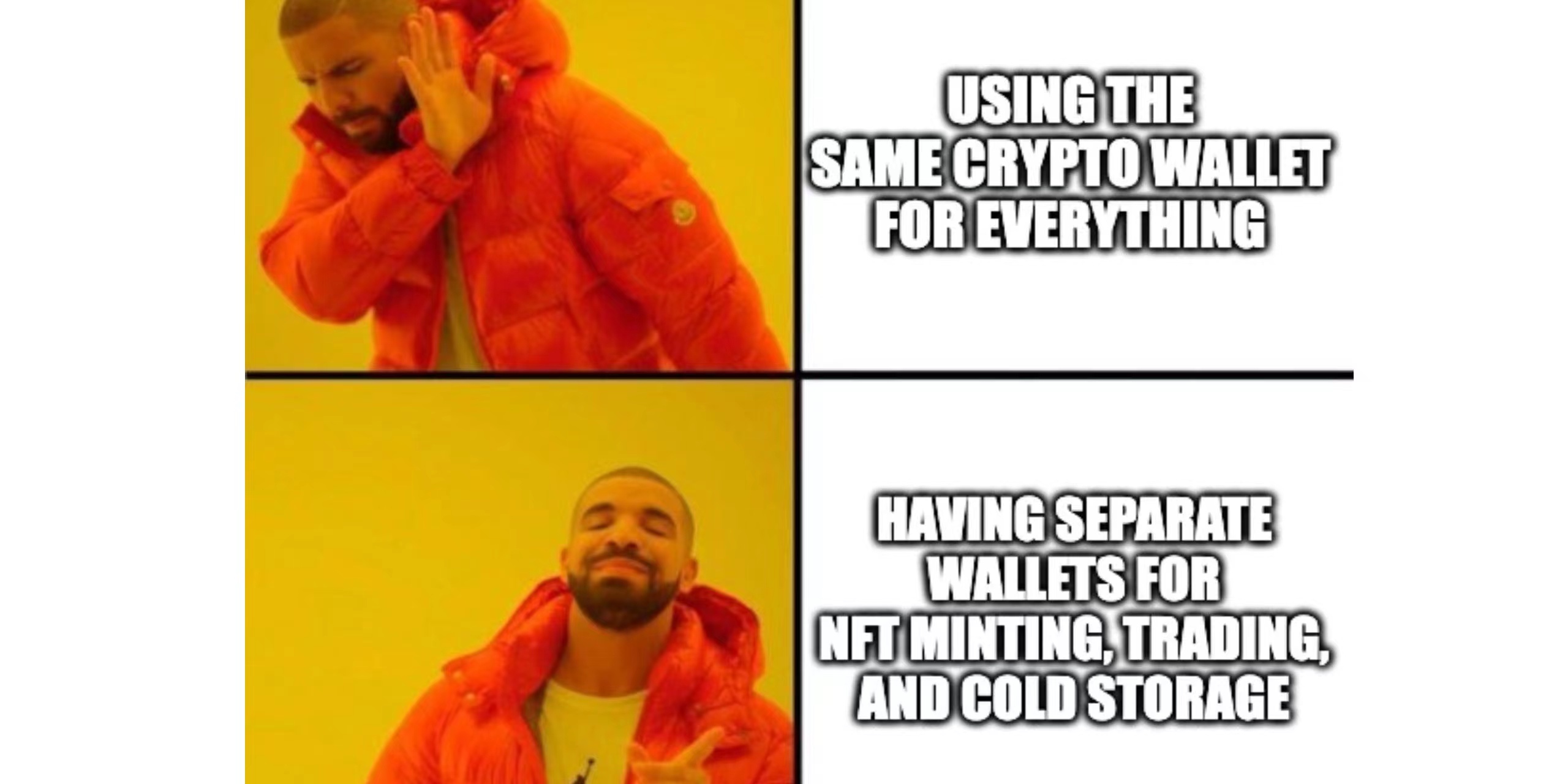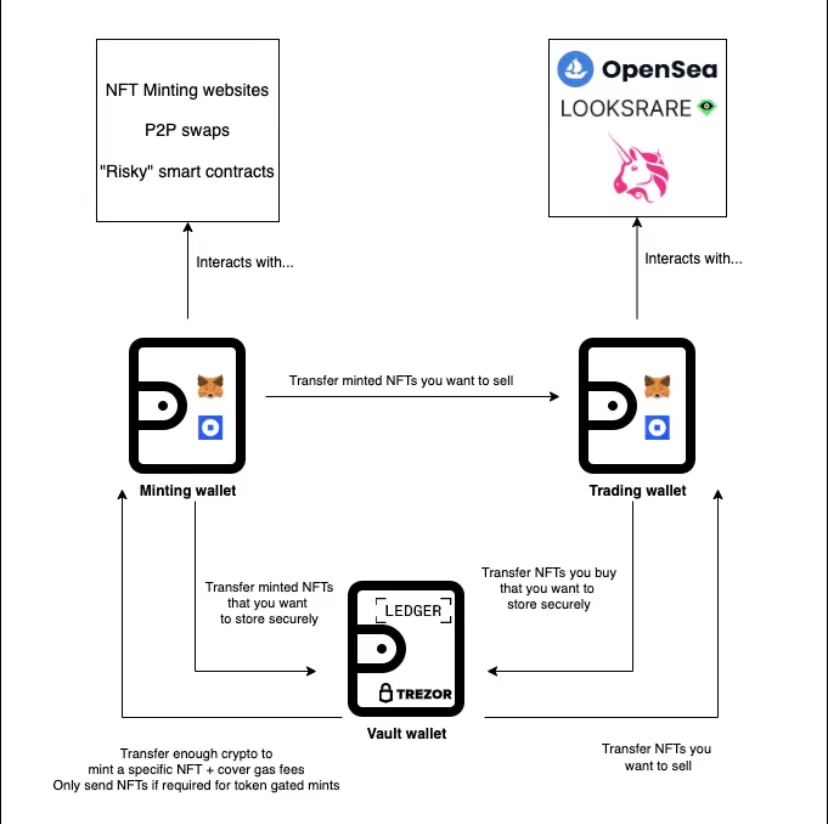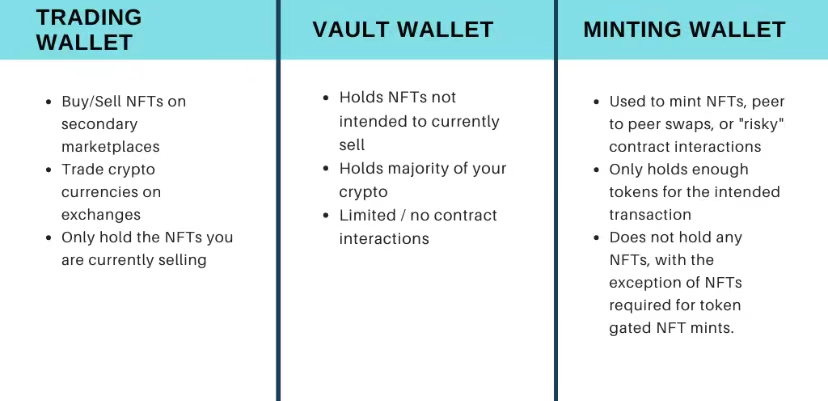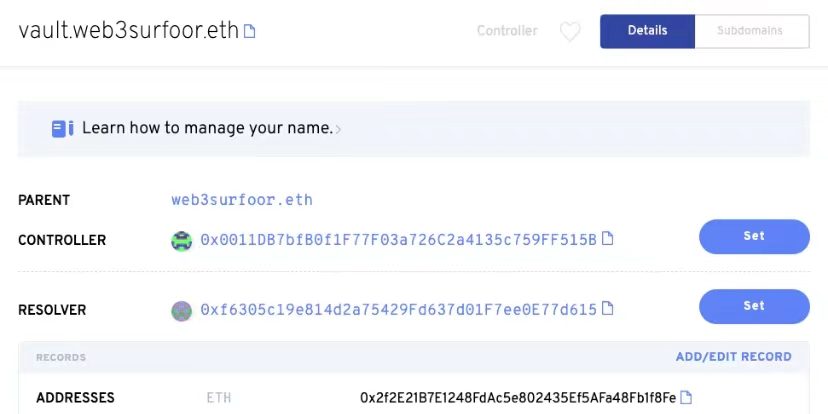This article comes from MirrorThis article comes from
 , the original author: Montana, compiled by Odaily translator Katie Ku.
, the original author: Montana, compiled by Odaily translator Katie Ku.
secondary title
overview
overview
We'll talk about three types of wallets, each with a different purpose.
Transaction Wallet: This is a universal wallet. Mint, trade NFTs, buy cryptocurrencies, connect to Web3 Dapps, and more.
Vault Wallet: This is a super secure private banking vault wallet. This is where NFTs and cryptocurrencies are actively stored.

Mint Wallet: This is a wallet for creating NFTs, performing peer-to-peer transactions (or interacting with any new Web3 application).
Many people use a wallet address for everything: trading cryptocurrencies, buying and selling NFTs, interacting with random smart contracts. This puts you at great risk that in the event of an accident, you lose everything.
existexist
In the approach I recommend, your exchange wallet will have a very specific role: only for buying and selling NFTs and trading cryptocurrencies.
When selling an NFT on a secondary market (like OpenSea) or trading cryptocurrencies on a decentralized exchange (like Uniswap), you must "token approval" in order for the wallet to automatically process the transaction.
This enables the platform to withdraw NFT/tokens from your wallet at any point in the future. If these platforms are hacked, your “approved” tokens/NFTs could be quietly moved from your wallet without your knowledge.
For DeFi users, I recommend creating a separate transaction wallet for DeFi in addition to the NFT transaction wallet. I recommend a wallet like MetaMask or Coinbase Wallet.
vault wallet
This wallet should also not be used to interact with secondary markets, DEXs, or grant any "token approvals" to any smart contracts. Periodically check that the wallet has granted any permissions by using:https://etherscan.io/tokenapprovalcheckerorhttps://revoke.cash. If you see any authorizations that you don't know about, revoke them immediately.

image description
Because no "token approval" has been granted in your vault wallet, the amount in this wallet is not at risk.
The only transactions your vault wallet should be used for are:
send cryptocurrency;
Transfer NFTs to another wallet.
If you need a Mint NFT, send enough Mint ETH + gas fee to your Mint wallet.
Likewise, if you need to buy NFTs in the secondary market, send enough ETH + gas to pay.
I recommend using a hardware wallet like Ledger.
Mint wallet
Sometimes referred to as a "one-time wallet", it is supposed to be a Mint NFT-related wallet used for peer-to-peer transactions, or to interact with new Web3 sites. There should only be enough gas left in this wallet to complete the transaction.This wallet is not supposed to store any NFTs other than the ones you need as Mint "entry tickets". The sole purpose of this wallet is to be an access point between you and the smart contract.
Any NFT purchased with this wallet should be sent immediately to your exchange wallet (for selling) or vault wallet (for storage).
Similar to the vault wallet, this wallet should never allow "token approval". Regularly check that the wallet has granted any permissions through the two tools introduced above.

Proper use of this simple wallet security framework can prevent scammers and hackers from draining your entire Web3 savings at once. If you are unfortunate enough to come into contact with a malicious contract from a scammer or hacker, the loss will be minimal and all you will lose is the current balance in your Mint wallet.
secondary title
Bonus: Easy wallet management with ENS subdomains
Most of you have probably heard of or used ENS domains, or seen people using them in place of their names on Twitter. These are human-readable names mapped to ETH addresses, managed by a protocol called ENS (Ethereum Name Service). This allows you to send NFTs or cryptocurrencies to other addresses instead of entering a 43-character Ethereum address.
Once properly configured, you will be able to easily transfer cryptocurrencies and NFTs between 3 crypto wallets using ENS domains.

Note: Following this part of the guide will require multiple gas fee transactions, if you do not have an ENS domain name, you will need to purchase an ENS domain name first.
Here is an example setup for managing your multiple wallet addresses using ENS subdomains:
web3surfoor.eth → 0x0011DB7bfB0f1F77F03a726C2a4135c759FF515B (transaction wallet)
vault.web3surfoor.eth → 0x2f2E21B7E1248FdAc5e802435Ef5AFa48Fb1f8Fe (vault wallet)
minting.web3surfoor.eth → 0x8a4716f66e7D204BE0d0223D6Dba91Dd23b4F7f7 (Minting wallet)
Where "web3surfoor.eth" can be replaced with your ENS domain name.I won't go into details on how to set up an ENS subdomain here, but BanklessThere is an article

There is a guide on how to set them up in a paragraph.